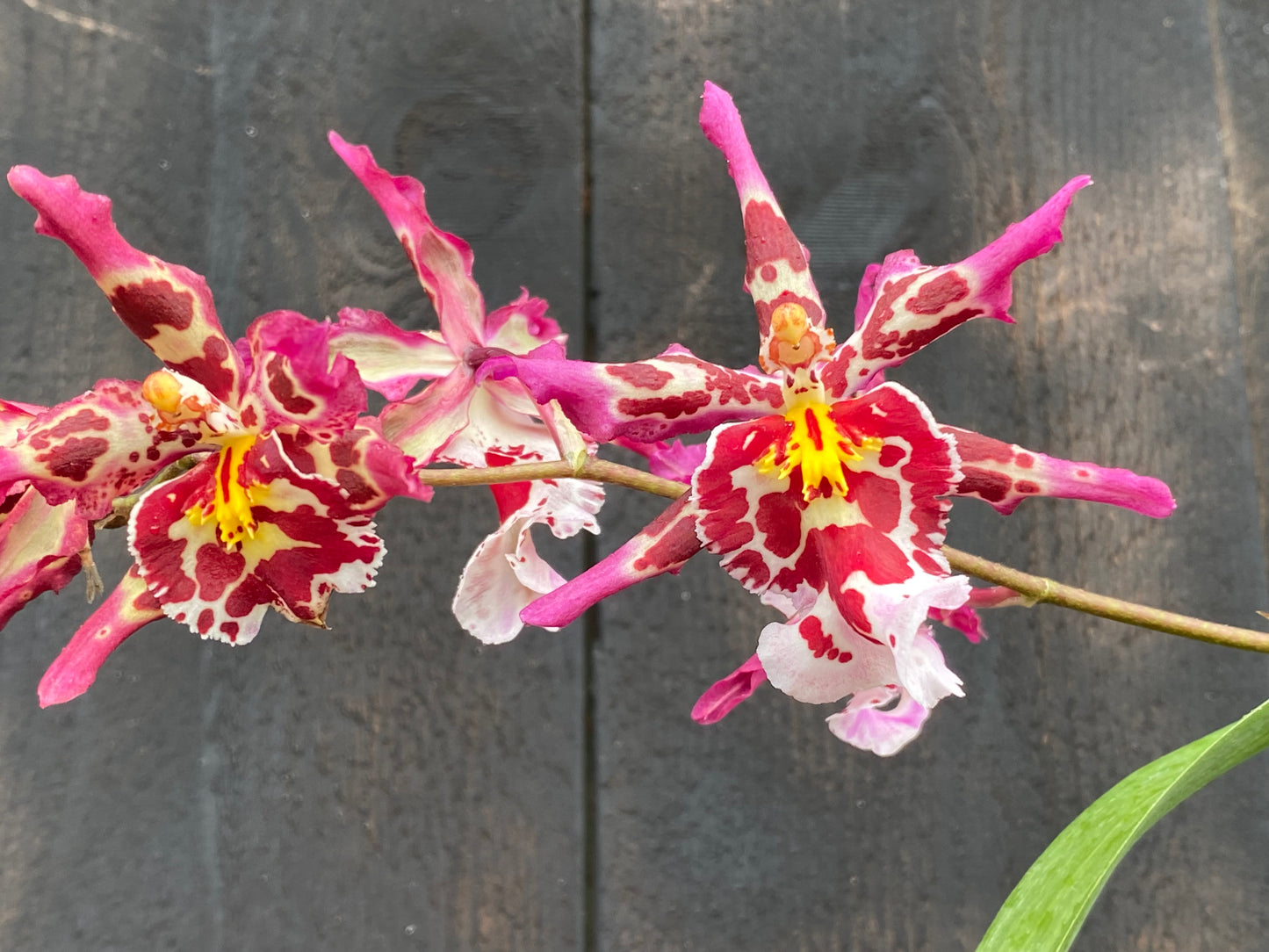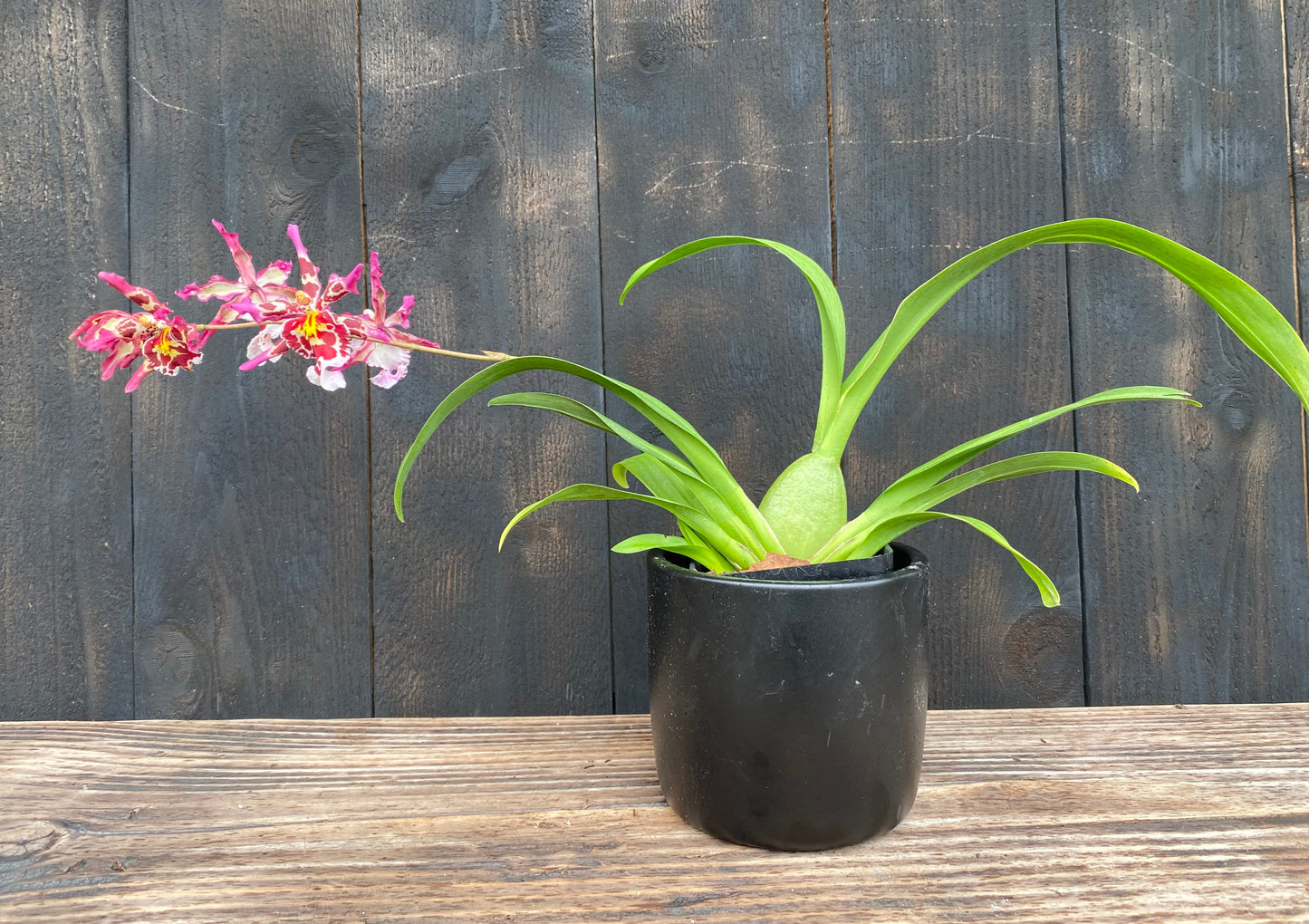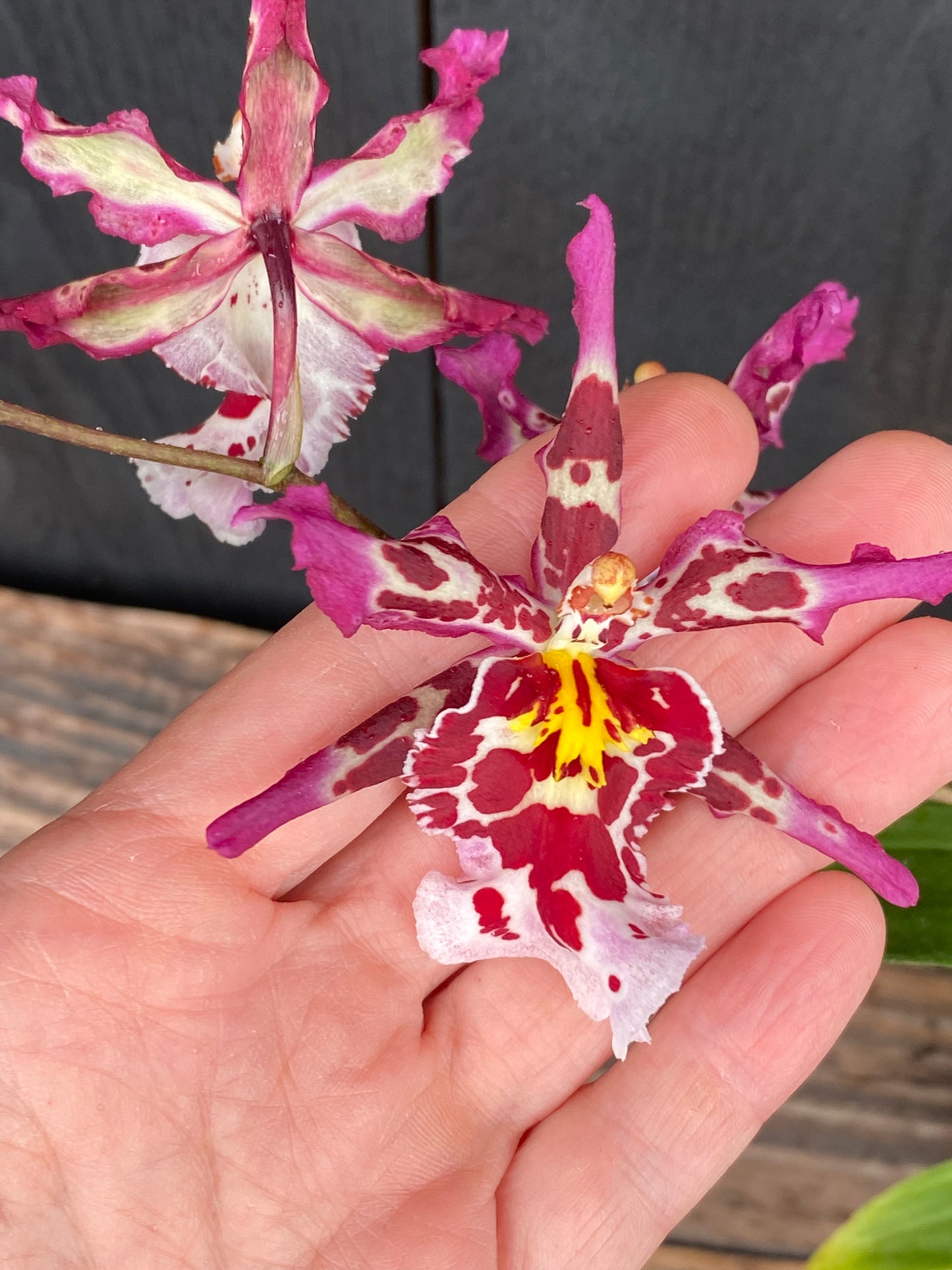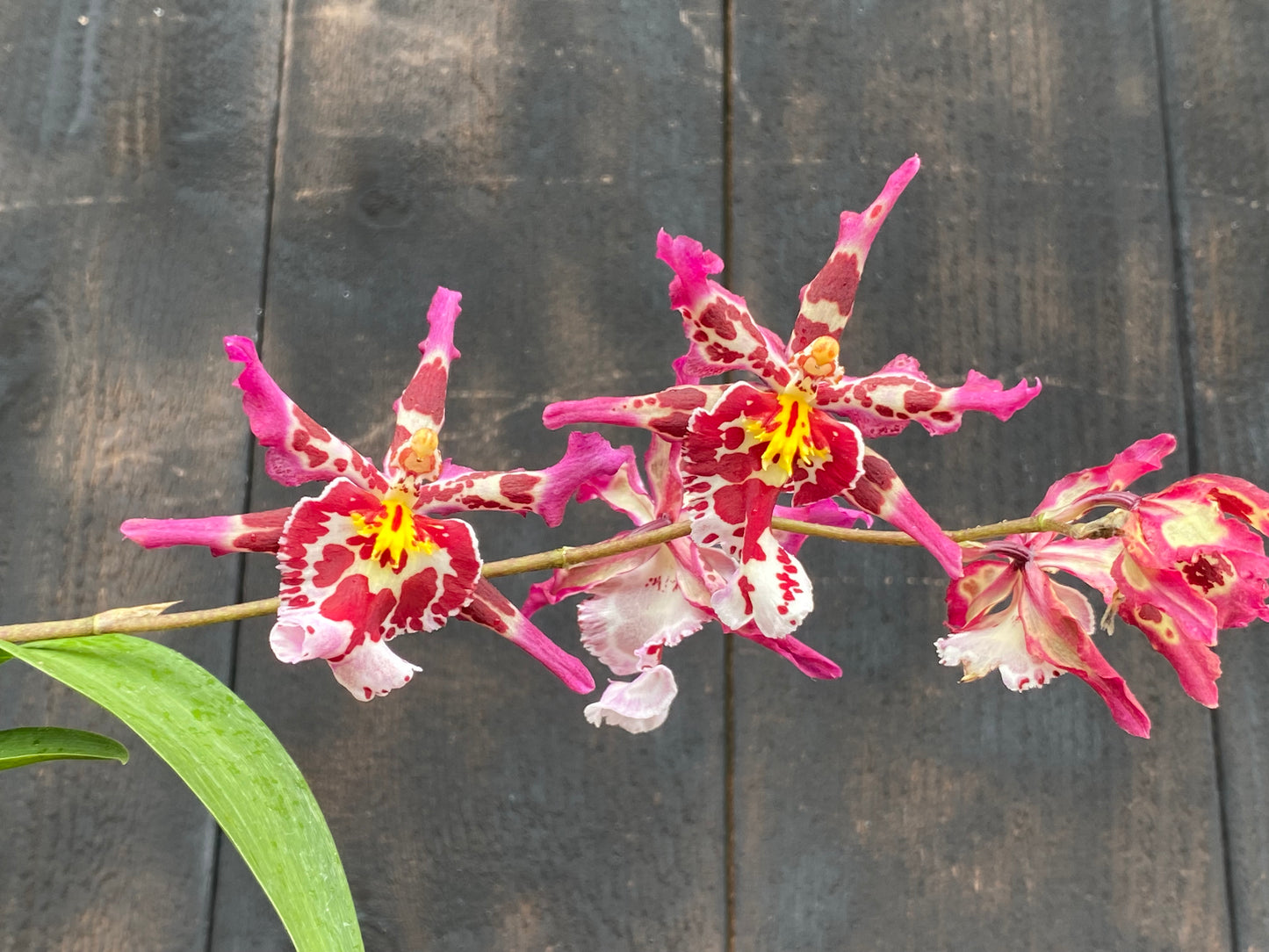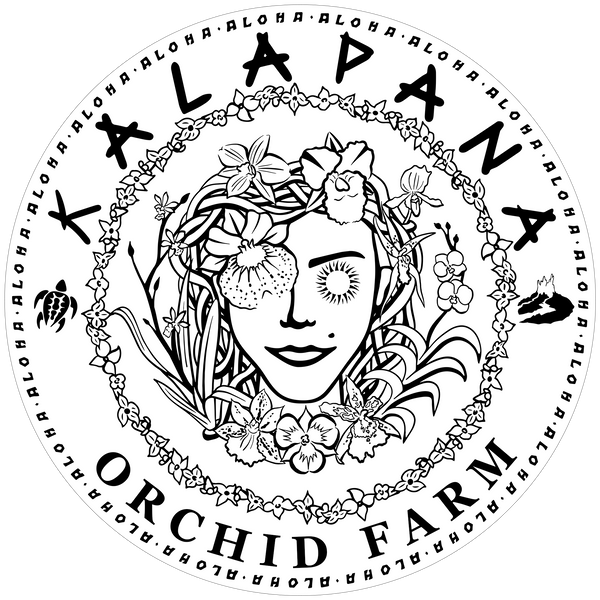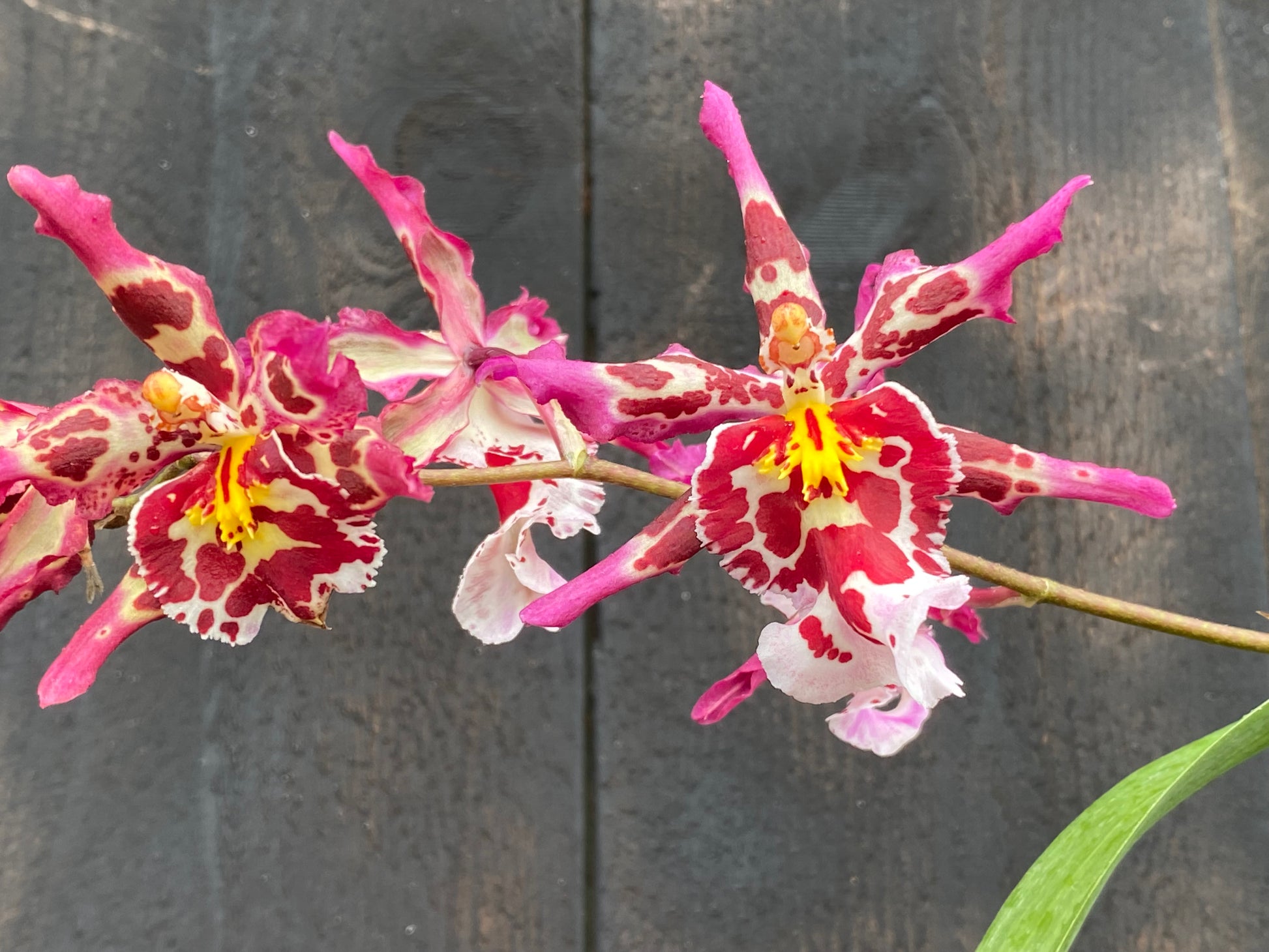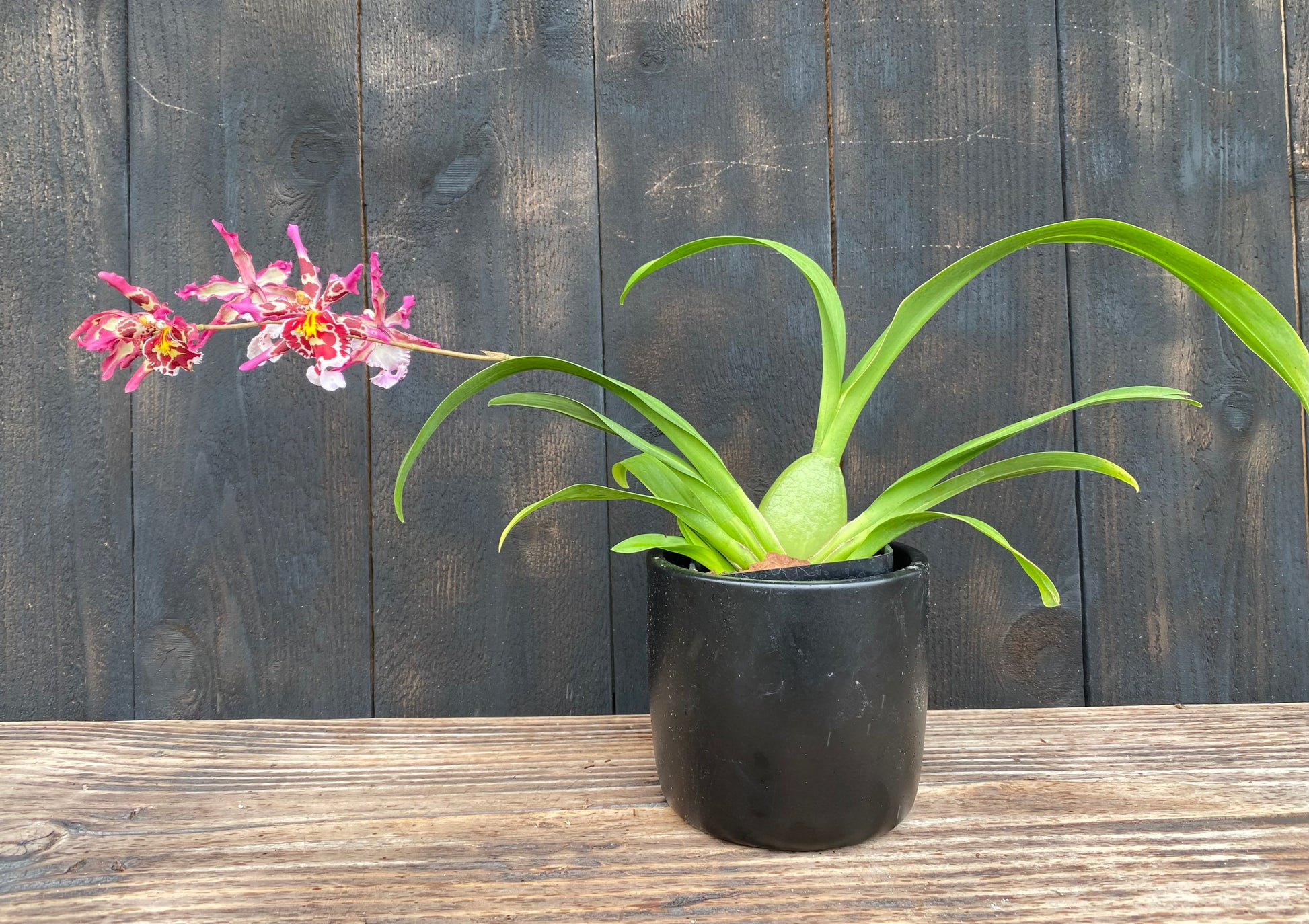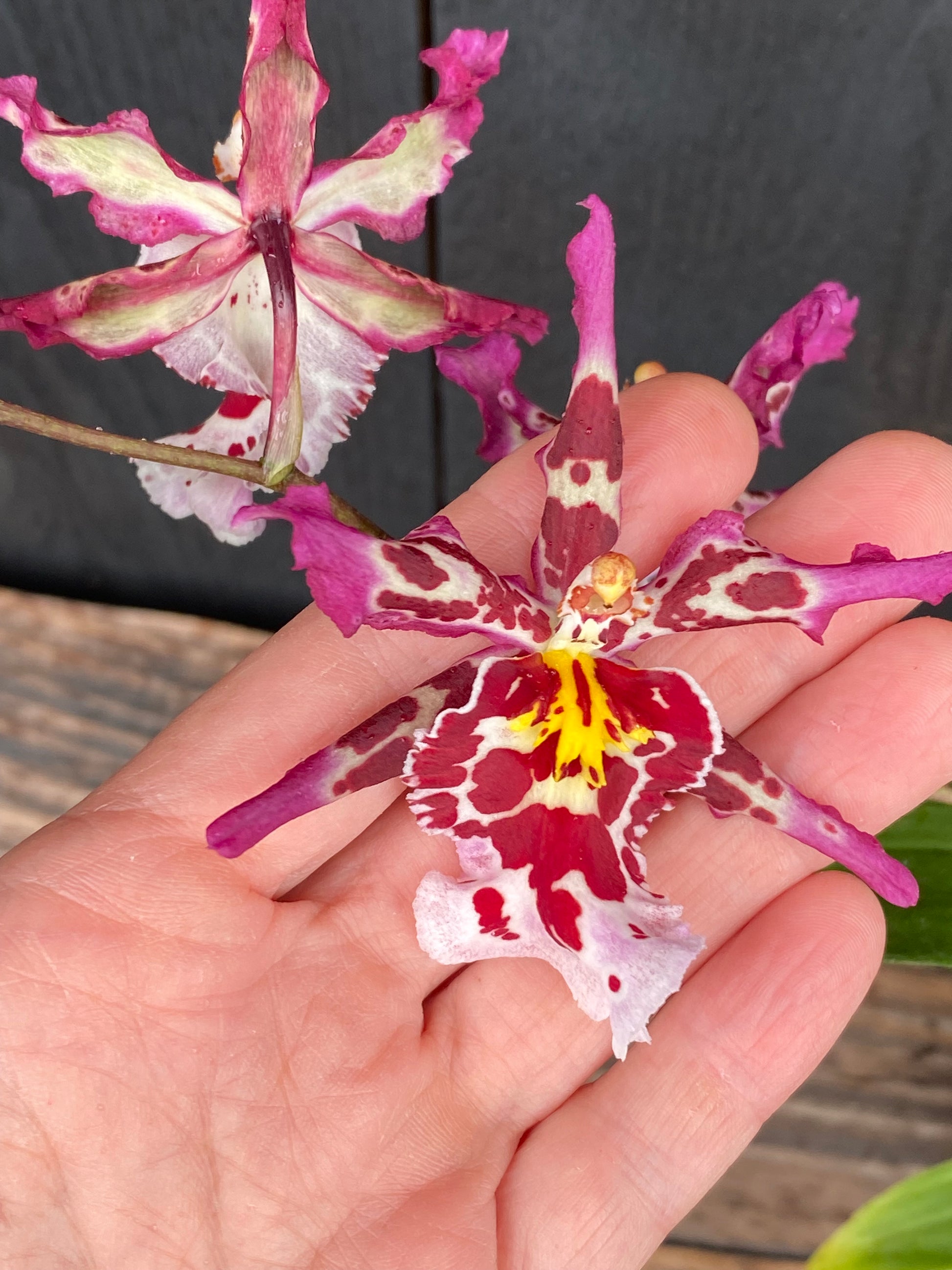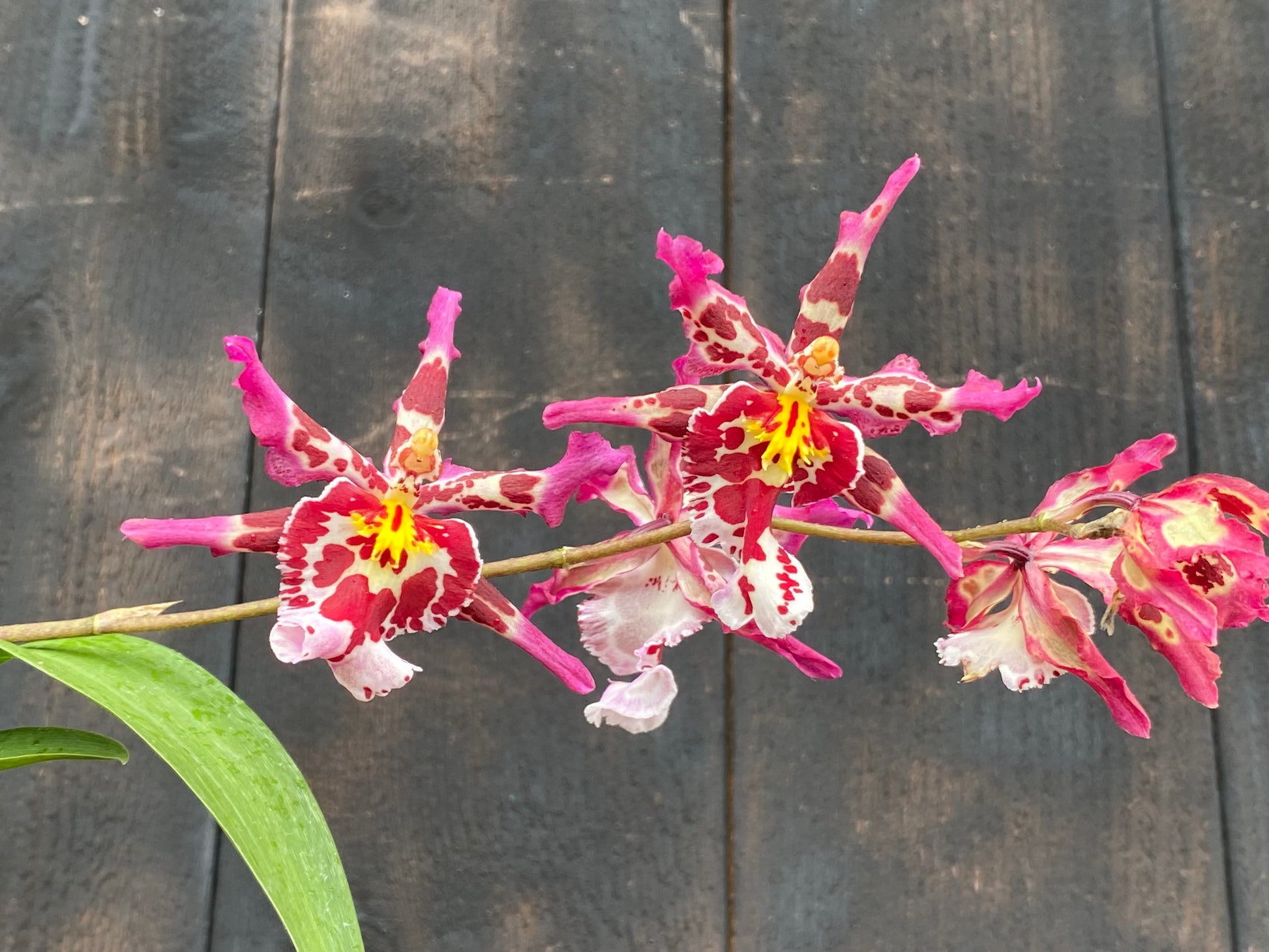Kalapana Orchid Farm
Wils. Eye Candy 'Pinky'
Wils. Eye Candy 'Pinky'
Couldn't load pickup availability
Wilsonara Eye Candy 'Pinky' Ultimate Culture Sheet
This plant is a cascade of intricate, starry flowers. Each 2-2.5 in. bloom is a complex masterpiece of pattern and color. The pointed sepals and petals have a crisp white or very pale pink background, which is then heavily splotched and barred with a deep, wine-red or magenta, especially toward the center of the flower. The tips of the petals and dorsal sepal often flush to a solid, vibrant fuchsia-pink.
The real show is the labellum (lip), which features a bright, sunny-yellow crest (callus) right at its heart. The ruffled, broad lip is white, dramatically splashed with large, confluent blotches of deep red, creating a bold, mosaic-like pattern that is slightly different on every flower. The blooms are arranged along a gracefully arching, often branching spike that can reach 2 ft. tall, presenting this airy, jeweled display beautifully.
The plant itself is a clean, upright grower. It produces plump, ovoid, slightly flattened pseudobulbs (about 3-4 in. tall), each topped by two (bifoliate) long, strap-like, bright green leaves that can be 12-18 in. in length.
Quick Start Light: Bright shade, 1,500–2,500 foot-candles (≈15–25k lux). No direct sun. Temps: Intermediate–Cool. Days 70–80°F (21–27°C); Nights 55–62°F (13–17°C). A night drop is key. Water: Water just as the medium approaches dryness. Keep evenly moist, but never soggy. Humidity: 50–70% with good air movement. Fertilizer: Weak (¼–½ strength), weekly in growth. Flush monthly. Media: Fine-to-medium bark mix with perlite/charcoal for good drainage.
🌺 Orchid Lore & Discovery Wilsonara is a classic "intergeneric" hybrid name, signaling a mix of three distinct orchid groups: Cochlioda, Odontoglossum, and Oncidium. The hybrid grex, Eye Candy, was registered in 1991.
Its parentage is (Odontocidium Crowborough x Cochlioda noezliana).
This is where the magic comes from:
Odontocidium Crowborough: This parent is itself a hybrid between Odontoglossum and Oncidium species. It brings the large, full, star-like flower shape, the complex spotting/patterning (from Odontoglossum ancestors like Odm. crispum), and the long, branching flower spikes (from its Oncidium side). These species hail from the high, cool, misty Andes of Colombia and Ecuador.
Cochlioda noezliana: This is the source of the intense red-pink pigments. A compact, cool-growing species from the high-elevation cloud forests of Peru and Bolivia (6,500–10,000 ft.), its flowers are a legendary, searing, fiery orange-red.
Wils. Eye Candy 'Pinky' is the perfect result of this cross: the cool-growing nature and starry, patterned shape of the Odontoglossum alliance, electrified by the shocking pink-red pigments from the Cochlioda.
A Quick Nerdy Note: Modern taxonomists have reclassified all these parent genera. Cochlioda and Odontoglossum are now largely sunk into Oncidium. This means that Wilsonara is technically now Oncostele (Ons.) or, even more broadly, just Oncidium. But in the hobby, Wilsonara remains the perfect name for this specific group of cool-growing, colorful hybrids.
🌿 How to Grow Wilsonara Eye Candy 'Pinky' Light Bright, filtered light is essential, about 1,500–2,500 foot-candles. This is less than a Cattleya but more than a Phalaenopsis. An east-facing window or a shaded south window is ideal. Direct midday sun will scorch the thin leaves.
Temperature This is the most critical factor. This plant requires cool nights to thrive and set flower spikes. It is an Intermediate-Cool grower.
Days: 70–80°F (21–27°C)
Nights: 55–62°F (13–17°C) A consistent 10–15°F drop in temperature at night is the primary trigger for flowering. It will tolerate warmer days if humidity and air movement are high, but it will suffer if the nights are consistently warm.
Water These plants have plump pseudobulbs to store water, but their fine roots dislike drying out completely. Water thoroughly, drenching the pot, and then wait until the medium is just approaching dryness before watering again. Never let it sit in a saucer of water.
Humidity Prefers 50–70%. These are cloud forest plants by ancestry. High humidity must be paired with constant, gentle air movement to prevent bacterial or fungal spots on the leaves.
Fertilizer Feed 'weakly, weekly' when in active growth (producing new pseudobulbs). Use a balanced orchid fertilizer at ¼ to ½ recommended strength. Flush the pot with plain, fresh water once a month to prevent salt buildup, to which their fine roots are sensitive.
Media A fine-to-medium grade Oncidium mix is perfect. A mix of fir bark, charcoal, and perlite provides the moisture retention and sharp drainage this plant loves. They prefer to be slightly under-potted in a pot that allows for good air exchange.
Repotting Repot every 1-2 years, before the media breaks down and becomes sour. The best time is in the spring, just as the new growth (the next pseudobulb) is starting to appear and new roots are just beginning to emerge.
Share
